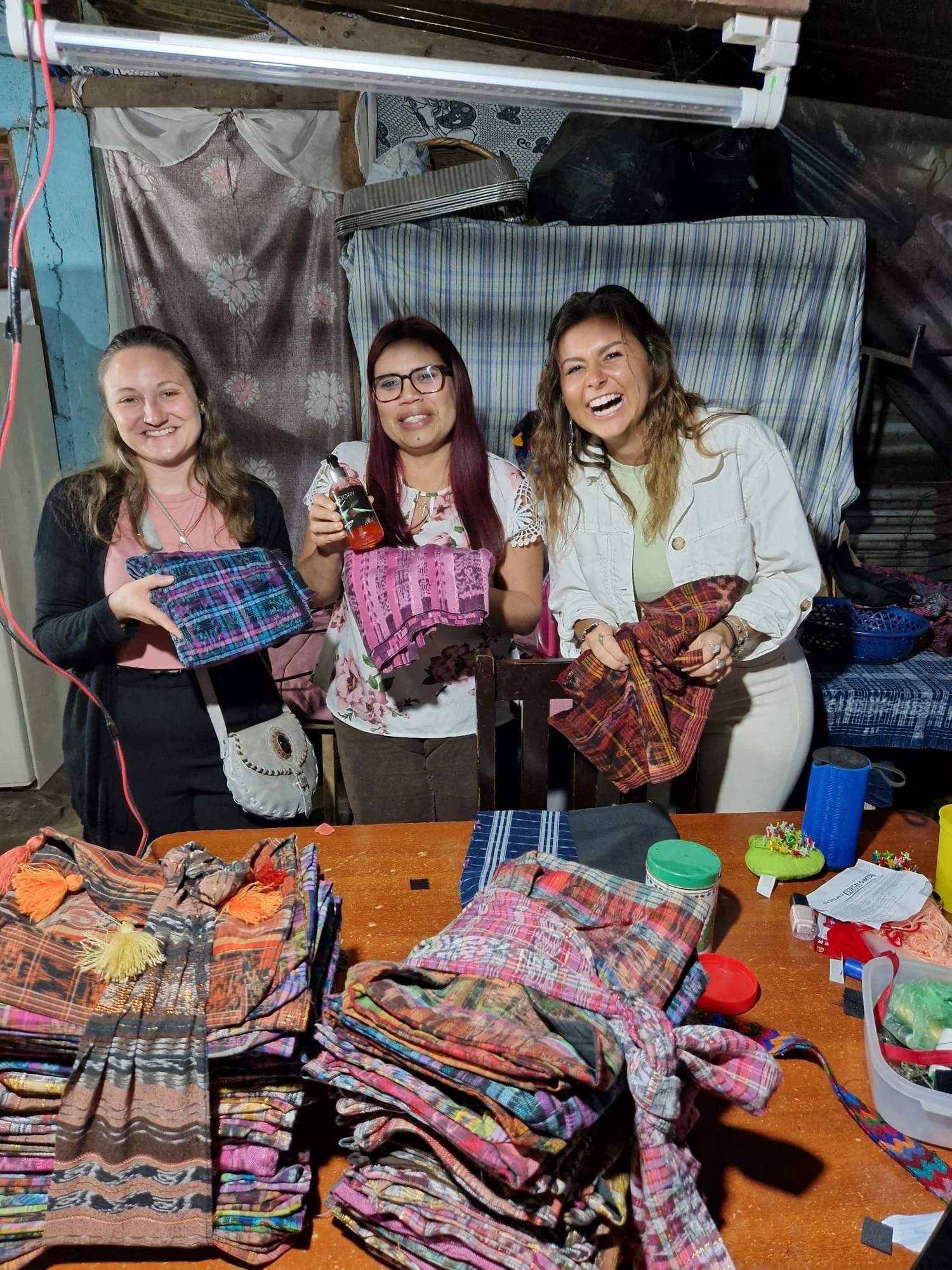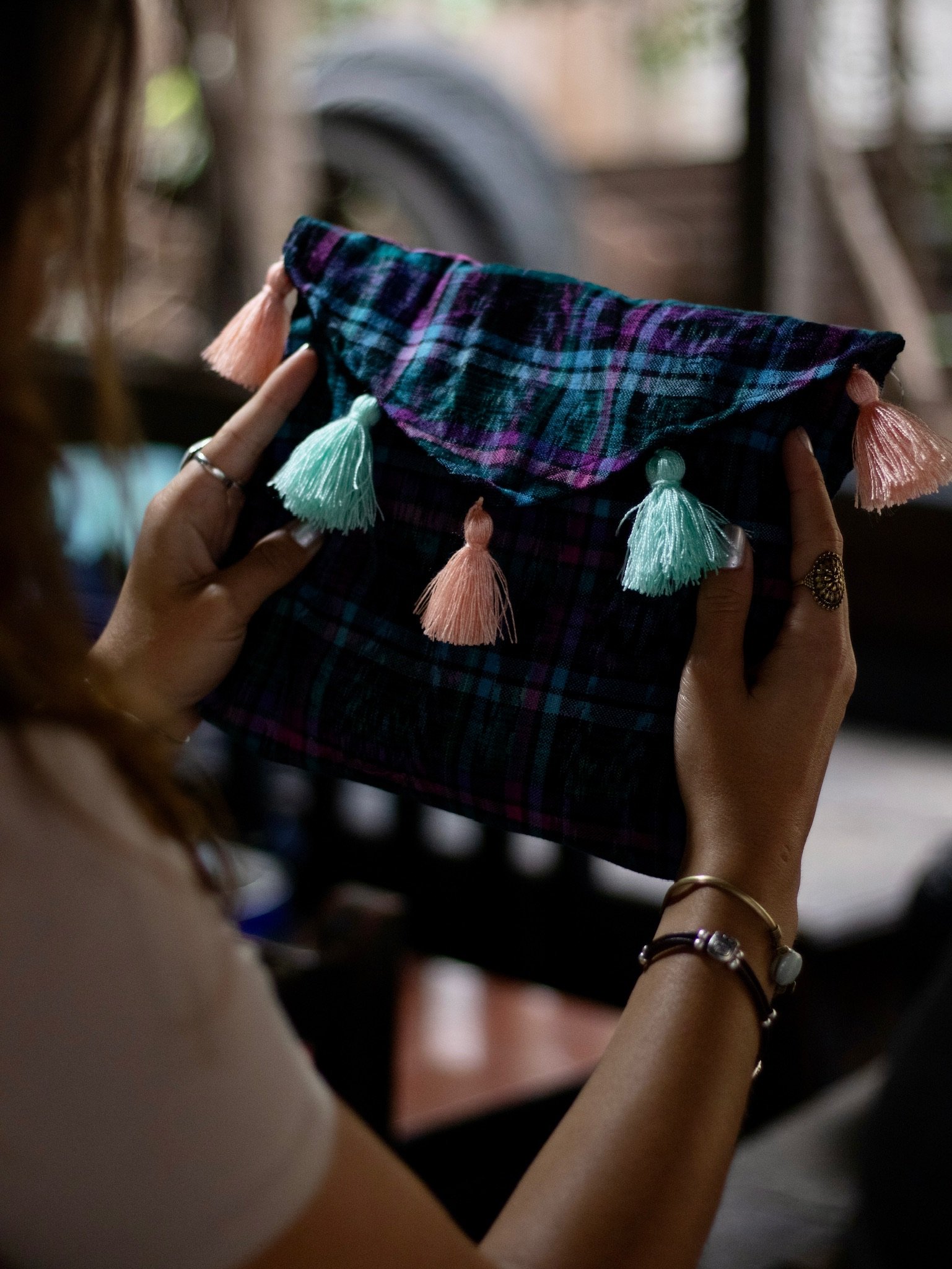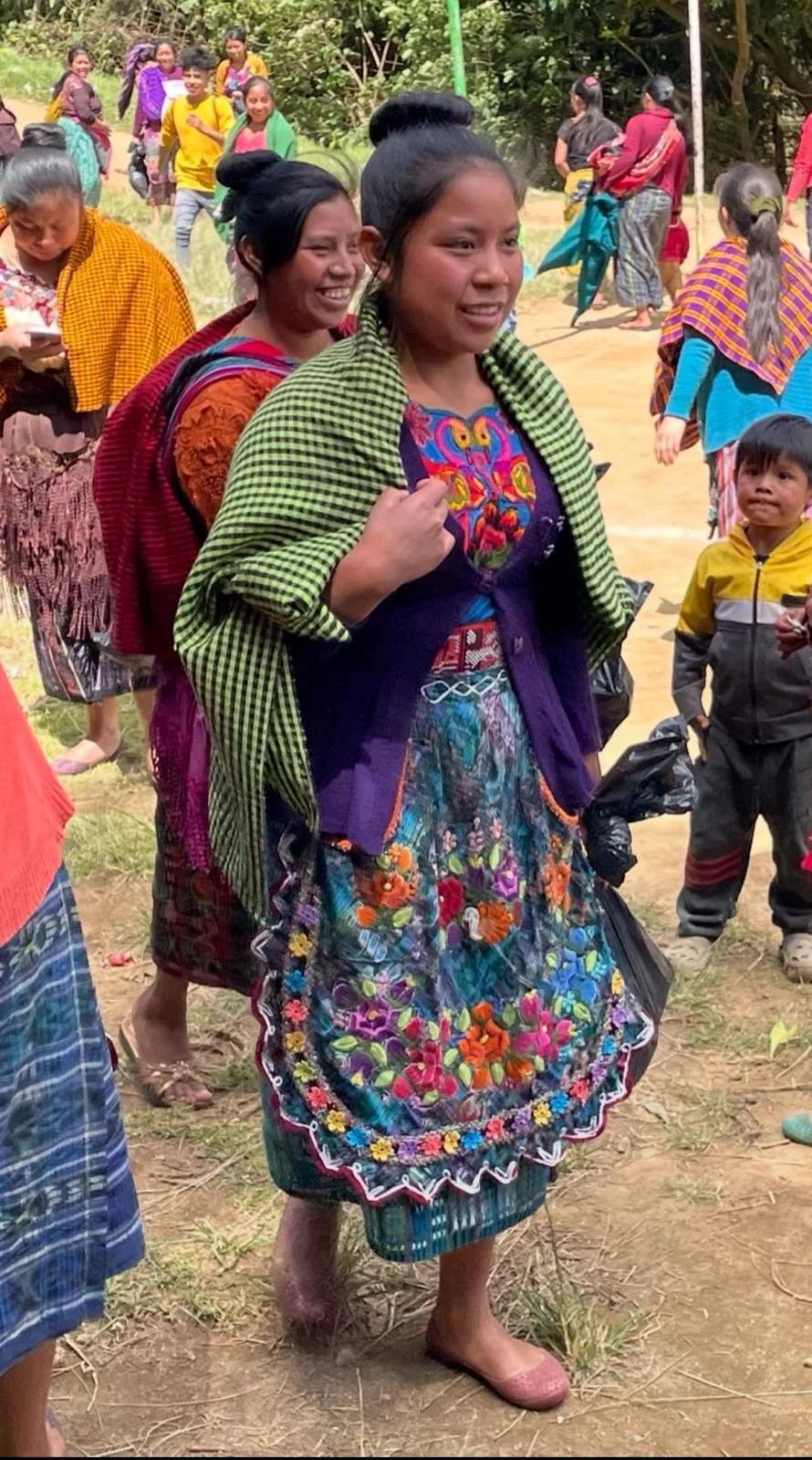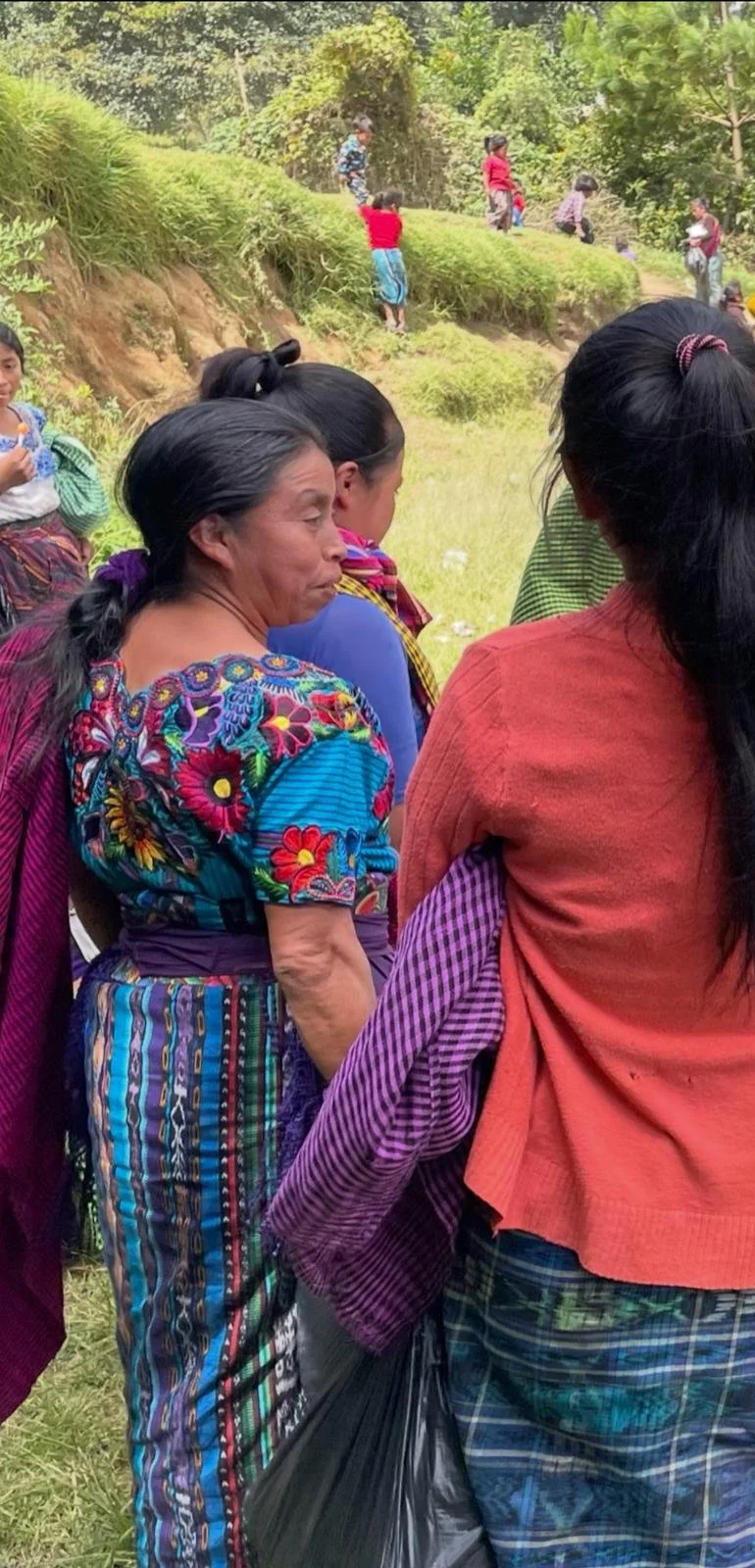Preserving Tradition while Creating Opportunity — Thread by Thread
Weaving is one of Guatemala’s oldest and most vibrant art forms. Its roots reach deep into the time of the Maya, who centuries ago created complex patterns, bright colors, and symbolic meanings within their fabrics. Each piece tells a story – of origin, identity, and the profound connection between people and nature. Today, our sewers continue this legacy, spinning new opportunities, and transforming traditional weavings into products that help them shape their own future, thread by thread.
The Origin of the Wool and Natural Dyeing
Before weaving even begins, the process starts with the creation of the wool. In many regions of Guatemala, it is made from sheep wool or cotton, washed, combed, and carefully spun. The vivid colors that bring threads to life are derived from nature itself: plants, minerals, and insects provide the pigments that make each fabric unique. Among the most famous are the deep cochineal red, made from a tiny insect, and indigo blue, made from the Indigo plant.


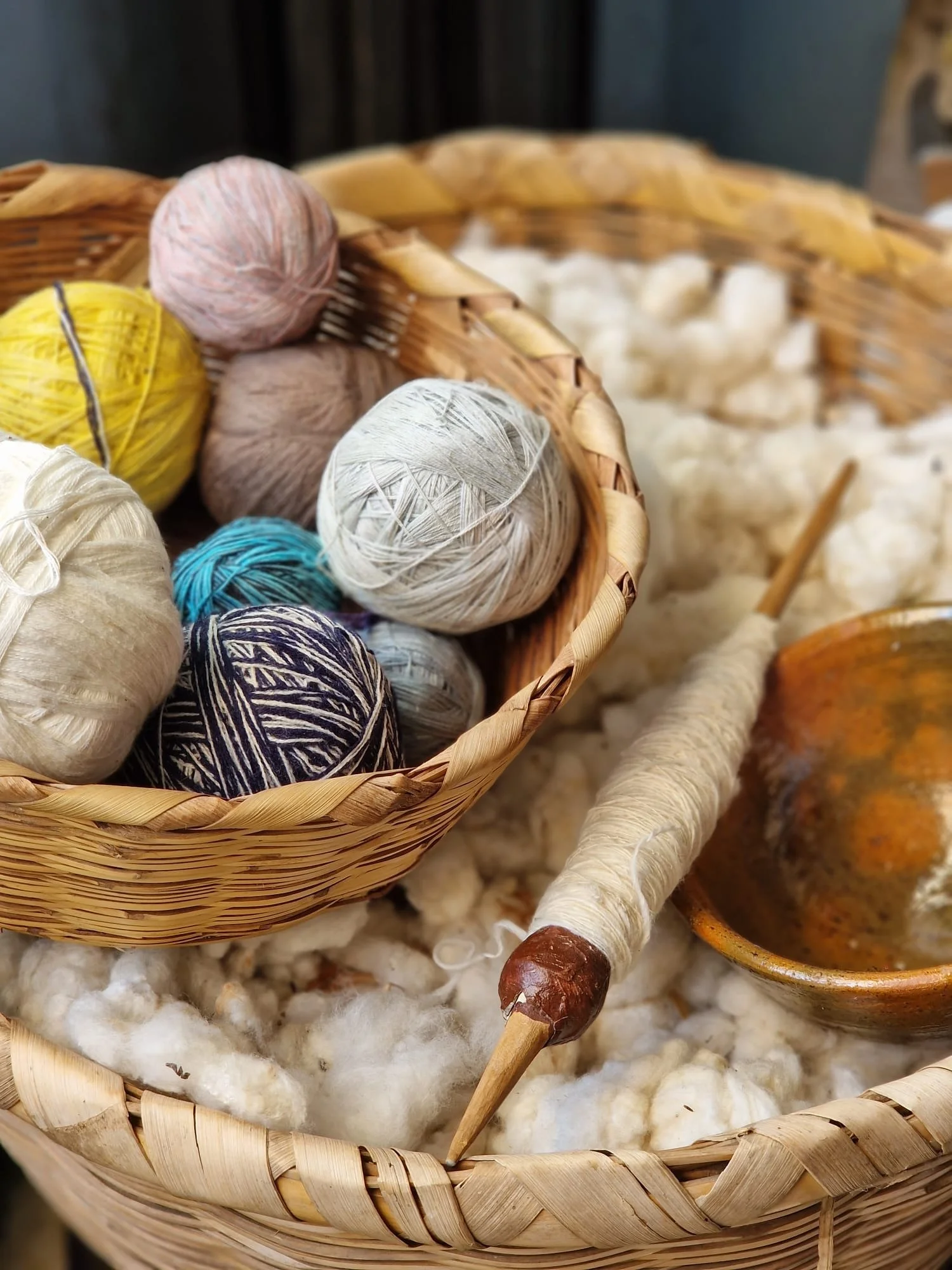

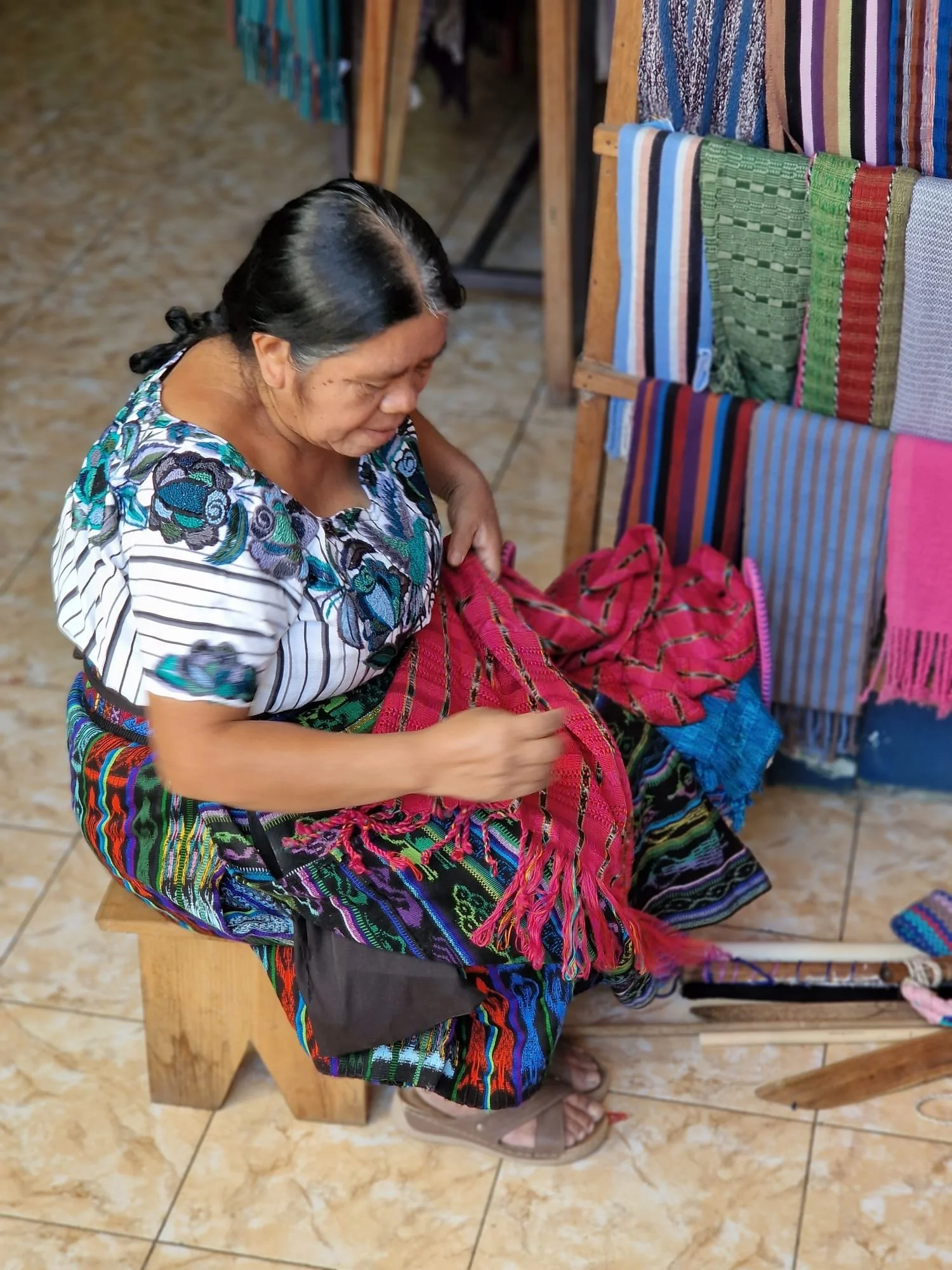

Traditional Weaving and Brocade Art
Weaving on the traditional backstrap loom is one of Guatemala’s most iconic and time-honored crafts. The loom is simple in structure yet capable of producing remarkably complex textiles. It is attached to a tree or post at one end, while the other end is fastened around the weaver’s waist with a strap. By leaning back and adjusting the tension with her body, the weaver controls the threads and patterns entirely by hand. This intimate connection between body and loom gives each piece a deeply personal touch.
Among the many techniques practiced on the backstrap loom, brocade weaving stands out for its intricacy and beauty. Brocade involves adding decorative threads into the fabric’s surface to create raised, often colorful patterns that seem to float above the base cloth. These designs can depict animals, flowers, geometric shapes, or ancient Mayan symbols — each one carrying cultural meaning and artistic expression passed down through generations.
Many girls begin learning the fundamentals of weaving at around seven years old. As teenagers, they are finally able to master the demanding brocade technique, which requires exceptional patience, precision, and creativity (backstrap weaving).
The Huipil – The Traditional Blouse
A central piece of Guatemalan traditional clothing is the huipil, an intricately woven blouse worn by women across different regions. The designs and colors of a huipil reveal the wearer’s community of origin – it is a piece of identity and cultural memory. Weavers near the old capital Antigua for example use strong colors to make floral and geometrical patterns (Huipils).

One of the most remarkable places to experience this rich weaving tradition is Chichicastenango — a town renowned for its vibrant textile market, the largest in Central America. Here, colorful fabrics and intricate patterns fill every corner, reflecting centuries of artistry and cultural heritage.
The Force Behind the Craft
In Guatemala, weaving is primarily women’s work. It is not only a source of income but also an expression of pride, knowledge, and community. Many women learn the craft from their mothers or grandmothers at a young age and pass it on to the next generation. Weaving thus becomes a form of cultural self-determination – a way to make their stories visible while fostering economic independence.
The M Story – Empowering Women, Preserving Tradition
That is why we from The M Story support Indigenous women in Guatemala who are learning to sew in order to generate their own income. Through workshops and training sessions, they were taught how to transform traditional fabrics into new creations – from toiletry bags, Muñecas Quitapenas (worry dolls), scrunchies, and much more. This initiative bridges ancient tradition with modern creativity. By doing so, The M Story helps preserve cultural knowledge, empower women, and create sustainable opportunities for a better future. You can support their work and choose your own handmade creation directly from our online shop.

